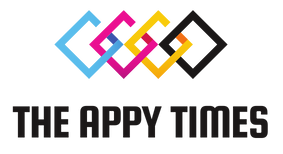With GenAI taking on virtually all the things we do, an amazing rising use case is “vibe coding.” The formal defintion of vibe coding is: “an AI-dependent programming method the place an individual describes an issue in a couple of sentences as a immediate to a big language mannequin (LLM) tuned for coding.”
Principally it permits anybody to create functions with out realizing how you can code a single line. It has the potential to assist speed up velocity, untangle earlier bottlenecks, and cut back the necessity to have each request go to R&D – permitting R&D to focus extra on advanced enterprise logic.
The Energy of Vibe Coding
Vibe coding jogs my memory of low-code and no-code platforms however on steroids. With vibe coding, anybody, and it does imply anybody, can change into a “developer” or just an “utility generator,” They work together with the AI platform in plain English after which experiment with the output till they get the specified final result.
The programming language of the longer term is… English!
Consider this for a minute. Within the not so distant future, you received’t have to know any propreriary lanagues. You’ll work together with the platfom in plain English and that’s it.
So what does it imply for safety?
The Safety Dangers of Vibe Coding
Whereas vibe coding is revolutionizing improvement, it additionally introduces new assault surfaces and safety blind spots:
- Unvetted AI-Generated Code – AI-driven coding assistants pull from huge datasets, however they don’t all the time differentiate between safe and insecure patterns. This might result in vulnerabilities like SQL injections, insecure authentication mechanisms, or publicity of delicate information.
- Over-Permissioned AI Brokers – Many AI-powered coding instruments require broad permissions to perform successfully. If compromised, these instruments may unintentionally expose supply code, credentials, or different delicate property.
- Compliance and Governance Challenges – AI-generated code isn’t all the time auditable or explainable, making it tough to make sure compliance with trade requirements like OWASP, GDPR, or ISO 27001.
- Overreliance on AI With out Human Oversight – People might belief AI-generated code with out correct validation, resulting in undetected vulnerabilities in manufacturing functions.
- The Nature of Vibe-Builders – whereas “conventional” builders had been educated on how you can develop software program with the correct high quality, funtionality and safety, most staff within the enterprise had been by no means educated in such a means.
A Holistic Method to Safe Vibe Coding
To completely embrace vibe coding with out compromising safety, organizations should take a broader, extra strategic method:
- Safety-First AI Improvement – AI fashions utilized in coding assistants needs to be educated with safety in thoughts, embedding safe coding practices on the foundations of their design.
- Human-AI Collaboration – As an alternative of absolutely changing human builders, AI ought to act as an assistant, with safety groups integrating AI-generated code into their current evaluation and validation processes.
- Regulatory Alignment and Transparency – Organizations ought to be certain that AI-driven improvement adheres to compliance requirements whereas demanding higher transparency from AI instrument distributors concerning safety practices.
- Steady Monitoring and Risk Detection – Implement real-time monitoring to detect uncommon AI-generated code patterns that might introduce vulnerabilities.
- Safety Consciousness and Upskilling – Builders needs to be educated not simply in safe coding, but additionally in understanding the safety dangers distinctive to AI-generated code.
- Moral AI and Bias Mitigation – AI fashions can inherit biases, together with safety weaknesses. Organizations ought to usually audit and refine these fashions to attenuate dangers.
Conclusion
Vibe coding is reshaping software program improvement, making coding extra accessible and environment friendly. However simply as low-code and no-code platforms launched safety challenges, AI-driven coding should be approached with a security-first mindset. By proactively addressing these dangers with a holistic technique, organizations can embrace the advantages of vibe coding whereas holding their functions and information secure.


